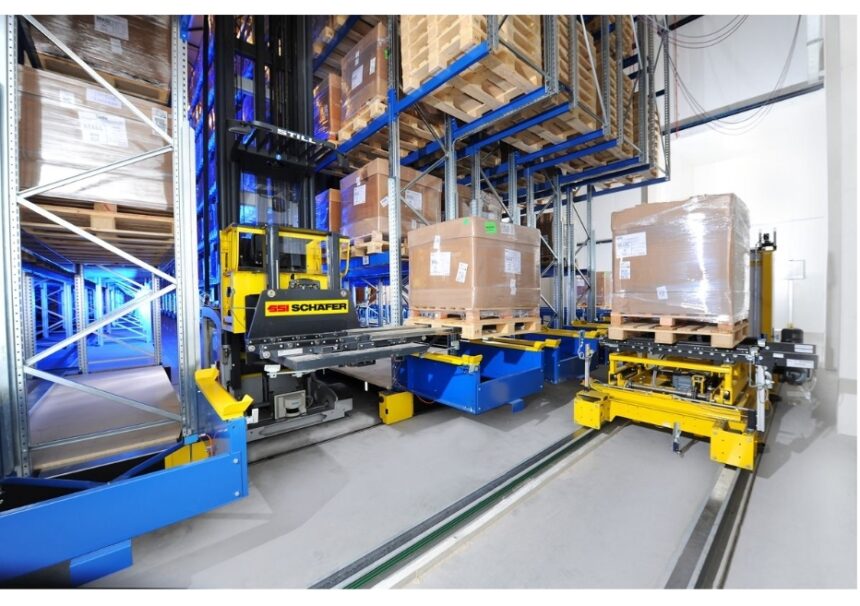In recent years, the logistics industry has witnessed a significant transformation, largely driven by advancements in warehouse automation technologies. North America, being a major hub for global trade and commerce, is at the forefront of adopting these innovative solutions. Warehouse automation encompasses a range of technologies, including robotics, artificial intelligence (AI), machine learning (ML), and the Internet of Things (IoT), which streamline operations, enhance efficiency, and reduce operational costs.
Market Trends, Projections, and Impact on Labor
The North American warehouse automation market is poised for robust growth in the coming years. According to industry analysts, the market is expected to grow at a compound annual growth rate (CAGR) of approximately 17.4% from 2024 to 2031. This growth is driven by the increasing adoption of automation technologies across various sectors, including e-commerce, retail, manufacturing, and pharmaceuticals and reaching US$23.2 billion by the end of 2031
One of the key concerns surrounding warehouse automation is its impact on labor and employment. While automation can lead to job displacement in certain roles, it also creates new opportunities in areas such as robotics maintenance, AI programming, and system integration. Companies are increasingly investing in retraining and upskilling their workforce to adapt to the changing landscape. Moreover, automation can help address the labor shortage in the logistics sector, ensuring that businesses can meet growing demand without being hampered by workforce constraints.
The Driving Forces and Key Technologies Behind Warehouse Automation
Warehouse automation in North America is propelled by several factors. The primary drivers include the increasing demand for faster delivery times, the need to optimize supply chain operations, and the growing labor shortage in the logistics sector. E-commerce giants and retail businesses are under constant pressure to deliver products quickly and accurately, necessitating the adoption of automated systems. Additionally, advancements in technology have made automation solutions more accessible and affordable, further fueling their adoption.
The future of warehouse automation in North America is being shaped by a variety of cutting-edge technologies. Autonomous mobile robots (AMRs) and AI-driven systems are revolutionizing warehouse operations. AMRs can navigate warehouses, transport goods, and perform tasks with minimal human intervention, significantly increasing efficiency and accuracy. Machine learning algorithms analyze vast amounts of data to optimize warehouse processes. They can predict demand, manage inventory, and streamline order fulfillment, ensuring that warehouses operate at peak efficiency. IoT devices provide real-time data on inventory levels, equipment status, and environmental conditions within warehouses. This data enables proactive maintenance, reduces downtime, and improves overall operational efficiency. Automated storage and retrieval systems (AS/RS) are advanced systems that automatically place and retrieve items from storage locations. These systems maximize space utilization and reduce the time required to locate and transport goods.
Sustainability, Environmental Benefits, and Successful Implementations
Warehouse automation also contributes to sustainability and environmental goals. Automated systems are typically more energy-efficient than manual operations, reducing the overall carbon footprint of warehouses. Furthermore, technologies such as AI and ML can optimize routing and logistics, minimizing fuel consumption and emissions. Companies that adopt these technologies can enhance their sustainability credentials and meet regulatory requirements more effectively.
Several companies in North America have successfully implemented warehouse automation solutions, demonstrating the benefits of these technologies. Amazon, as a pioneer in warehouse automation, has deployed thousands of robots in its fulfillment centers. These robots work alongside human employees to pick, pack, and sort items, significantly improving operational efficiency and reducing delivery times. Walmart has invested heavily in automation technologies to streamline its supply chain operations. The company uses AI and ML to optimize inventory management and deploys autonomous robots for tasks such as floor cleaning and shelf scanning. FedEx has integrated automated sorting and routing systems in its distribution centers. These systems enhance the speed and accuracy of package handling, enabling faster and more reliable deliveries.
Startups, Innovators, and Challenges in Warehouse Automation
In addition to established companies, numerous startups and innovators are driving the future of warehouse automation. These companies are developing cutting-edge solutions that address specific challenges within the logistics industry. For example, robotics startups are creating specialized robots for tasks such as picking and packing delicate items, while AI companies are developing advanced algorithms for predictive analytics and demand forecasting.
Despite the numerous benefits, warehouse automation also presents certain challenges and considerations. The cost of implementing automation technologies can be significant, posing a barrier for small and medium-sized enterprises (SMEs). However, the long-term benefits and cost savings often justify the initial investment. Integrating new automation systems with existing infrastructure can be complex and time-consuming. Companies must ensure that new technologies are compatible with their current operations and systems. With increased reliance on digital systems and IoT devices, cybersecurity becomes a critical concern. Companies must implement robust security measures to protect their data and systems from cyber threats.
Future Outlook and Conclusion: Embracing the Automation Revolution
The future of warehouse automation in North America looks promising, with continued advancements in technology and growing adoption across various industries. As companies strive to enhance their operational efficiency and meet the demands of a rapidly evolving market, automation will play a crucial role in shaping the logistics landscape.
Warehouse automation is no longer a futuristic concept but a present-day reality transforming the logistics industry in North America. By embracing these technologies, companies can achieve greater efficiency, reduce costs, and improve their overall competitiveness. As the market continues to grow, businesses that invest in automation will be well-positioned to thrive in an increasingly dynamic and demanding environment. In summary, the future growth of North America warehouse automation is set to revolutionize logistics, offering unprecedented opportunities for innovation, efficiency, and sustainability. As the industry continues to evolve, staying ahead of the curve with advanced automation solutions will be key to success.







